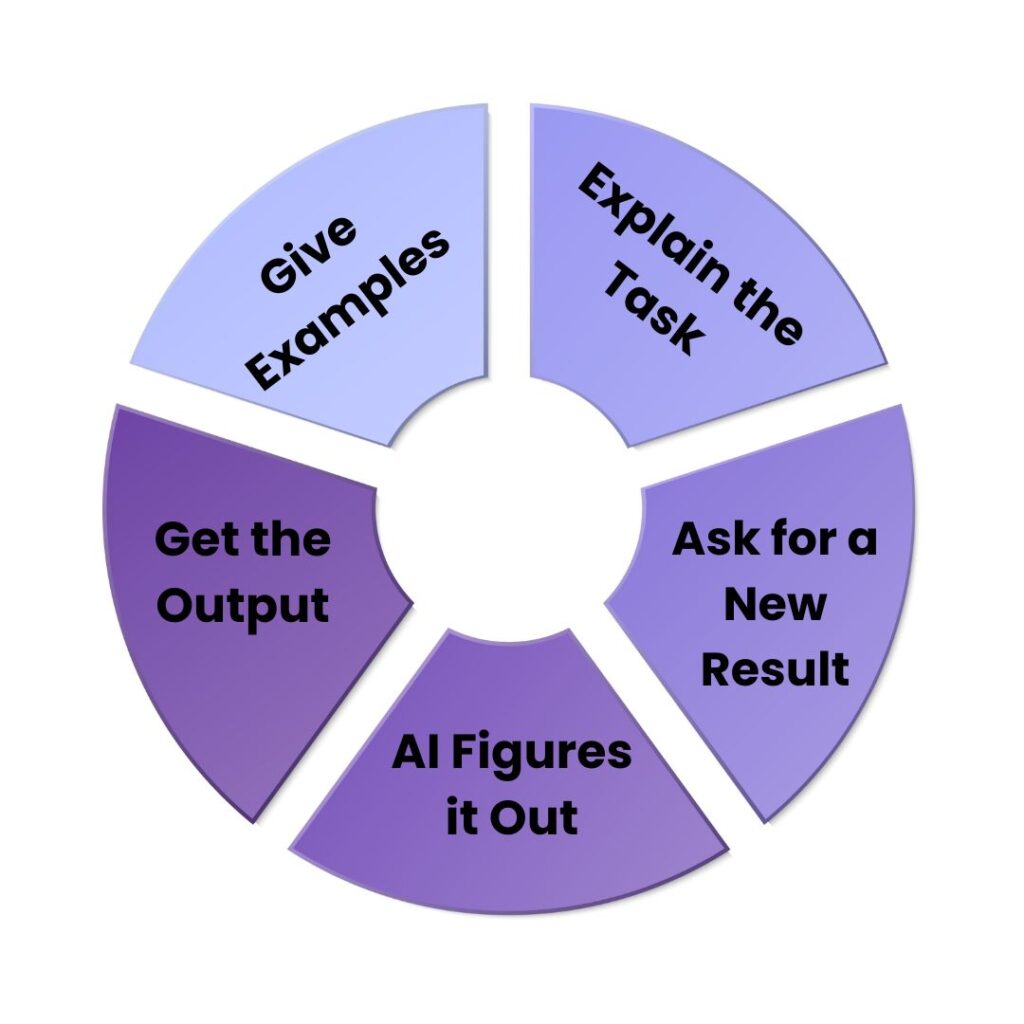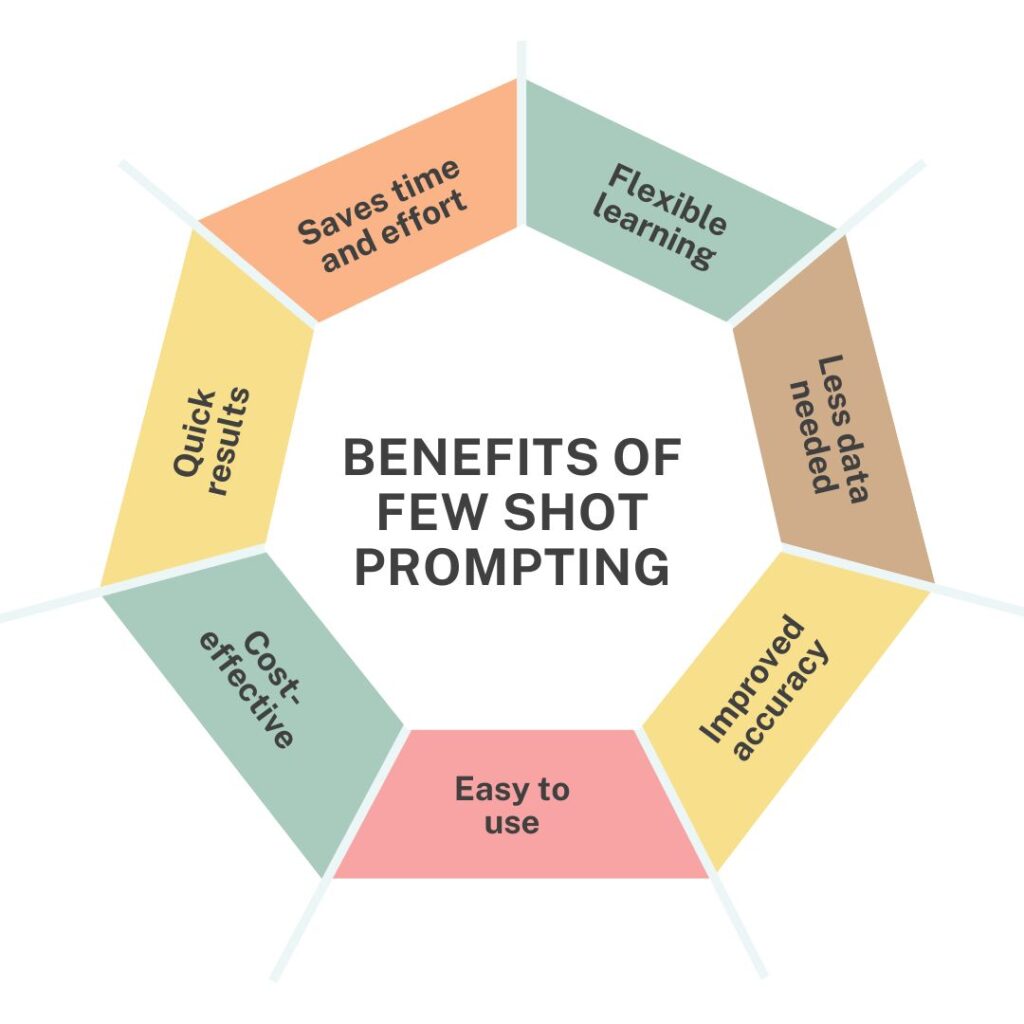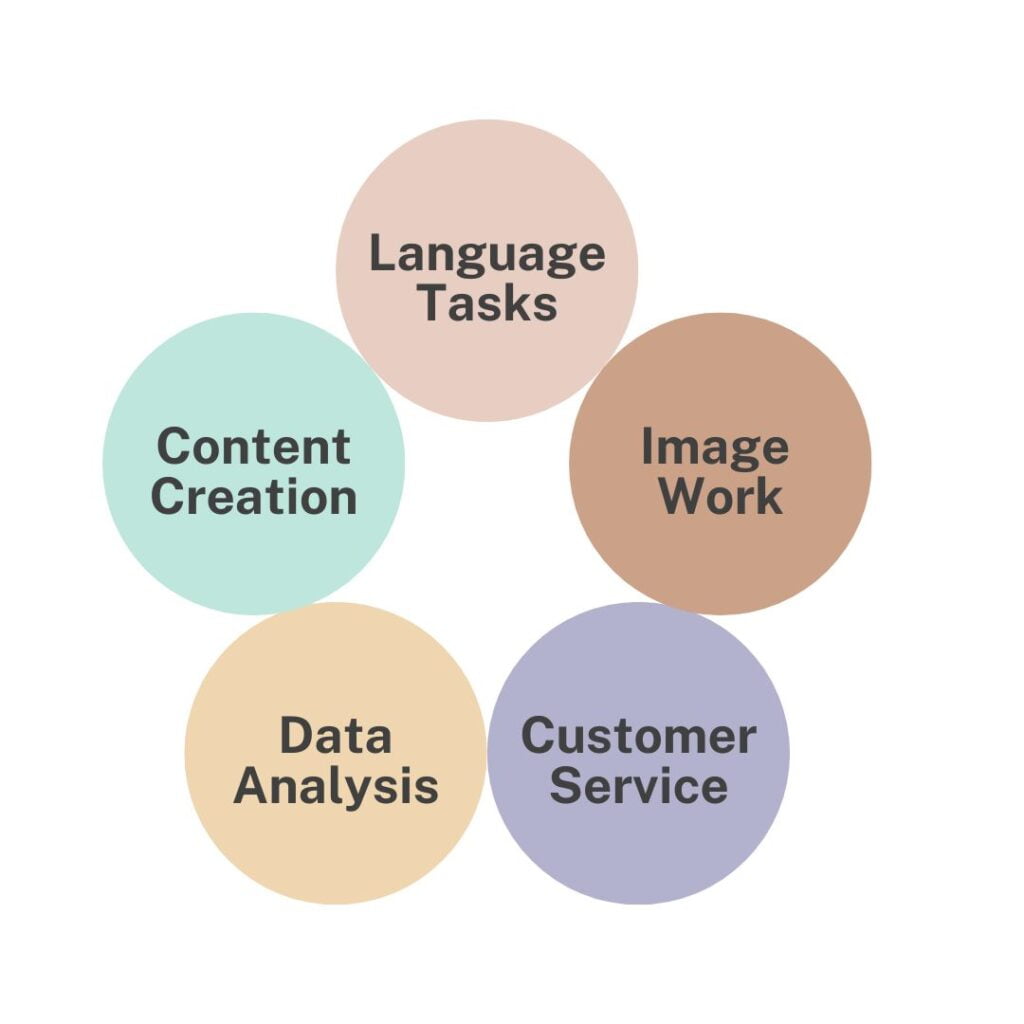Have you ever wished your AI assistant could understand you better with just a few examples? That’s where few shot prompting comes in. It’s a game-changer in the world of AI, making machines smarter and more adaptable than ever before.
Few shot prompting is a technique that teaches AI models to perform new tasks by showing them just a handful of examples. It’s like giving your smart friend a quick crash course before asking for help.
In this blog, we’ll dive into the ins and outs of this exciting technology. We’ll explore how it works, why it matters, and how it’s shaping the future of AI. Let’s get started!
Table of Contents
- What is Few Shot Prompting
- How Few Shot Prompting Works
- Benefits of Few Shot Prompting
- Common Applications of Few Shot Prompting
- Tips for Effective Few Shot Prompting
- Limitations and Challenges
- The Future of Few Shot Prompting
- Conclusion
What is Few Shot Prompting

Few shot prompting is a way to teach AI new things with just a few examples. Think of it as giving your smart friend a quick lesson.
We show the AI a few samples of what we want it to do. Usually, it’s about 2 to 5 examples. These help the AI understand new tasks without needing lots of data.
This method makes AI more flexible. It can learn new things faster and work better in different situations. It’s like teaching a quick learner who only needs a few hints to get the job done.
How Few Shot Prompting Works

Few shot prompting works in a simple way. Let’s break it down into easy steps:
Give Examples:
- Show the AI a few samples of what you want it to do.
- These samples are called “shots.”
Explain the Task:
- Tell the AI what you want it to do with these examples.
- Keep it clear and simple.
Ask for a New Result:
- Give the AI a new, similar task.
- Ask it to use what it learned from the examples.
AI Figures it Out:
- The AI looks at the patterns in your examples.
- It tries to copy these patterns for the new task.
Get the Output:
- The AI gives you its answer or result.
- This is based on what I learned from your few examples.
Let’s use a fun example:
You want the AI to write silly pet names. You might give it these examples:
- Fluffy Cat -> Sir Whisker Fluffington
- Big dog -> Baron Woofles von Berkshire
Then you ask it to name a “Small fish.” It might come up with “Lord Finley Bubblesworth.”
That’s a few shot prompting in action! The AI learns from a few examples and applies that learning to new situations.
Benefits of Few Shot Prompting

Few shot prompting offers several advantages. Here’s why it’s so useful:
Saves Time and Effort:
- No need for huge datasets
- Quick to set up and use
Flexible Learning:
- AI can adapt to new tasks easily
- Works well for different types of problems
Less Data Needed:
- Useful when you don’t have lots of examples
- Helps protect privacy by using less personal data
Improved Accuracy:
- Often gives better results than no examples at all
- Can be more precise for specific tasks
Easy to Use:
- Simple to understand and apply
- You don’t need to be an AI expert
Cost-Effective:
- Requires less computing power
- Cheaper than training large models from scratch
Quick Results:
- Get AI working on new tasks faster
- Ideal for time-sensitive projects
By using just a few examples, few shot prompting makes AI more practical and accessible for everyday use. It’s like having a smart helper that can quickly learn and tackle new challenges!
Common Applications of Few Shot Prompting

Few shot prompting is used in many areas. Here are some common ways people use it:
1. Language Tasks
Few shot prompting helps AI understand and use language better. It can:
- Write different types of text
- Answer questions more accurately
- Translate between languages with less training
2. Image Work
In the world of images, few shot prompting is very useful. It helps AI:
- Identify objects in pictures
- Create new images based on descriptions
- Edit photos with just a few example edits
3. Customer Service
Many businesses use few shot prompting to improve their customer service. It helps:
- Chatbots understand customer questions better
- Create personalized responses
- Handle different types of customer issues
4. Data Analysis
Researchers and analysts love few shot prompting because of it:
- Finds patterns in data more easily
- Helps predict trends with less information
- Makes sense of complex data sets quickly
5. Content Creation
Content creation like writers and marketers use few shot prompting to:
- Generate ideas for articles or ads
- Create different versions of content
- Adapt writing styles for different audiences
These are just a few ways people use few shot prompting. As AI keeps getting smarter, we’ll likely see even more cool uses for this technique!
Tips for Effective Few Shot Prompting
Want to get the best results from few shot prompting? Here are some helpful tips:
1. Choose good examples: Pick clear, diverse examples that show what you want. Make sure they cover different aspects of the task.
2. Keep it simple: Use easy-to-understand language in your prompts. Avoid complex words or jargon.
3. Be specific: Tell the AI exactly what you want it to do. The clearer you are, the better the results.
4. Use a consistent format: Structure your examples the same way each time. This helps the AI spot patterns.
5. Start with more examples: If you can, use 3-5 examples instead of just 1-2. More examples often lead to better results.
6. Test and adjust: Try different prompts and examples. See what works best and make changes as needed.
7. Provide context: Give some background info if it helps explain the task better.
8. Be patient: Sometimes it takes a few tries to get it right. Don’t give up if the first attempt isn’t perfect.
Remember, practice makes perfect. The more you use few shot prompting, the better you’ll get at it!
Limitations and Challenges
While few shot prompting is a powerful tool, it’s not without its drawbacks. Like any technology, it has its limits and faces certain challenges.
Understanding these can help us use it more effectively and know when to look for alternative methods. Let’s explore some of these limitations and challenges:
Limitations
Few shot prompting is helpful, but it’s not perfect. It works best with simple tasks that are easy to explain with a few examples.
For complex jobs, it might not be as good. Sometimes, the AI can get confused if the new task is very different from the examples.
Also, few shot prompting might not work well for tasks that need a lot of background knowledge. The quality of the results can vary depending on the examples you use.
Challenges
Using few shot prompting can be tricky. One big challenge is picking the right examples. If you choose poor examples, the AI might learn the wrong things.
Another issue is bias. If your examples are biased, the AI’s responses will be biased too. It’s also hard to know how many examples to use. Too few might not be enough, but too many can confuse the AI.
Sometimes, the AI might copy the examples too closely instead of understanding the general idea. Lastly, it can be difficult to explain some tasks with just a few examples, especially if they’re complicated or need special knowledge.
The Future of Few Shot Prompting
Few shot prompting is still new, but it’s growing fast. Experts think it will become even more important in the coming years. Here’s what we might see:
Better AI models will make few shot prompting work even better. They’ll need fewer examples to learn new tasks. This means AI will be able to help with more complex jobs.
Researchers are working on ways to make few shot prompting more reliable. They want to reduce mistakes and make sure the AI understands tasks correctly every time.
In the future, few shot prompting might help AI learn from real-world experiences, just like humans do. This could lead to smarter, more adaptable AI systems.
Conclusion
In conclusion, few shot prompting is a powerful tool that’s changing how we use AI. It makes AI smarter and more flexible with just a few examples. While it has some limits, its benefits are clear. As technology improves, few shot prompting will likely become even more useful. It’s an exciting area that could make AI more helpful in our daily lives. Keep an eye on this tech – it’s sure to surprise us in the future!


1 thought on “All You Need To Know About Few Shot Prompting”